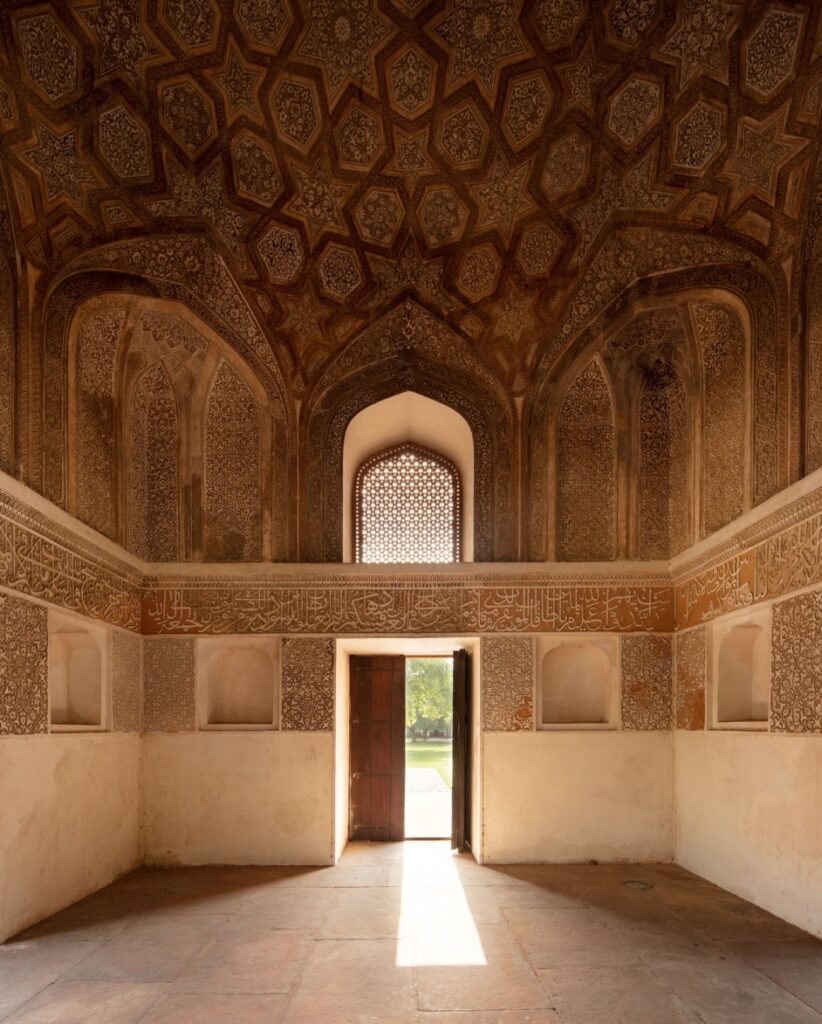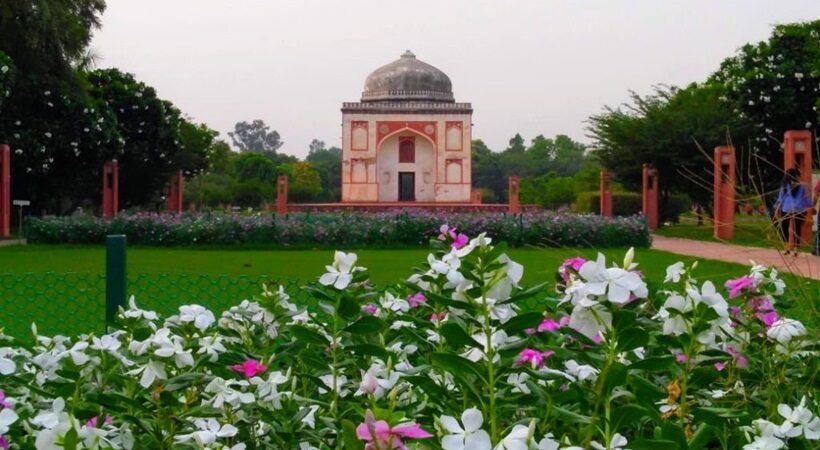If you’re looking for a place to relax and escape from the heat at India’s capital, then Sundar Nursery is the right alternative for you. Sunder Nursery is a vast 90 acres of green space with a sparkling lake, plethora of trees and 15 stunning historical monuments. This expanse of 90 acres is a part of the Humayun’s Tomb complex. Known as Sunder Nursery, the park was built by the Mughals in the 16th century and was originally known as Azim Bagh. After 10 years of dedicated revival and restoration efforts led by the Aga Khan Trust for Culture (AKTC), Sunder Nursery, now a heritage park, was opened for the public in 2019.
Sunder Nursery is located adjacent to Humayun’s Tomb Complex as well as the Nizamuddin Basti. The historical garden largely followed the Mughal Grand Trunk Road connecting significant monuments. One of the most striking monuments of the nursery is the Sunder Burj, an early 16th-century Mughal-era tomb. The Sundar Burj is especially known for its awe-inspiring domed ornamental ceiling. The ceiling design, a highly stylized rendition of stars in the night sky, is unmatched in its architectural elegance. The structure was once on the verge of structural collapse. However, today the Sunder Burj is a part of a UNESCO-certified heritage complex buzzing with immense activities.

Image Credits: beautifulhomes.com
The newly restored Sunder Burj is situated at the main entrance to Sunder Nursery, the city’s first arboretum, established in the early 20th century. There are also approximately 15 other historical monuments within the complex, including the Lakkarwala Burj, Mughal graves and Mirza Muzaffar Hussain’s tomb. Extensive conservation work has been carried out on the mausoleums, keeping in mind the preservation of their architectural integrity. From structural repairs to environmental conservation, it took over 10 years of dedicated work to restore the historic necropolis to its former glory.
The restoration of Sunder Burj’s ceiling took considerable time and efforts of expert artisans and craftsmen. The radiant ceiling had suffered extensive damage due to water seepage and shoddy repair works conducted previously. Trained craftsmen worked tirelessly to restore the decorative plasterwork of the domed ceiling and repair the cracks in the mausoleum’s walls and latticed screens.

Image Credits: beautifulhomes.com
The landscape design at the Sunder Nursery carefully followed the former style of the organized Mughal Gardens. While restoring the garden and adding new elements, the inspiration from the Mughal style and its principles remain intact. The grand central vista with its verdant gardens, running canals, flower beds and sandstone seating, offers sweeping views of the complex. Restored to its former glory the complex was named as one of the “World’s 100 Greatest Places of 2018” by Time Magazine. Centuries ago, while designing Humayun’s Tomb, its original Persian architect Mirak Mirza Ghiyas imagined the tomb as being surrounded by the mythical ‘gardens of paradise’. Sundar Nursery marks an astonishing feat in the field of heritage conservation and certainly offers a taste of paradise in the hubbub of Delhi.



















